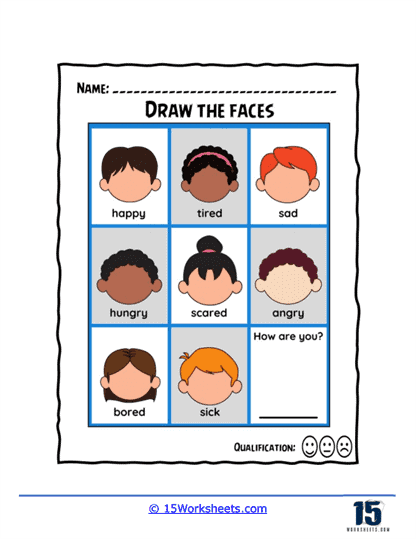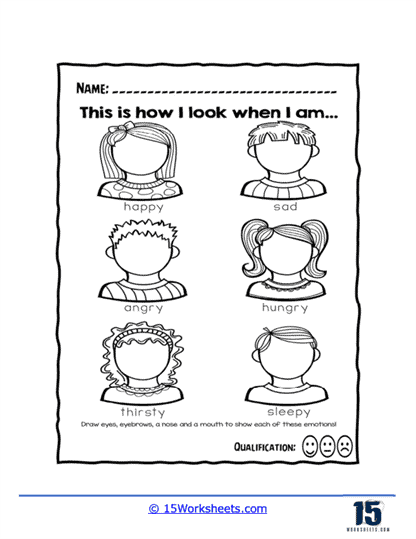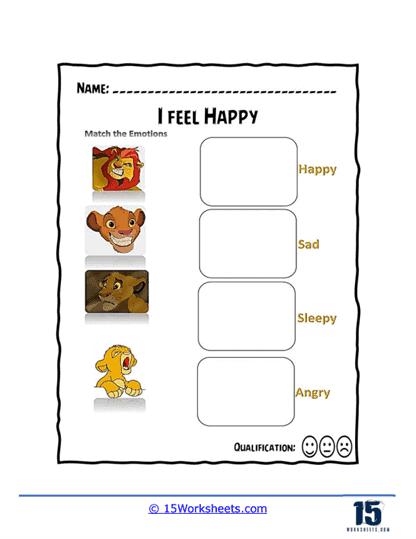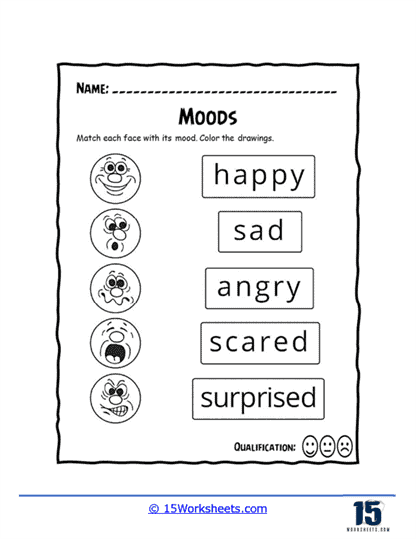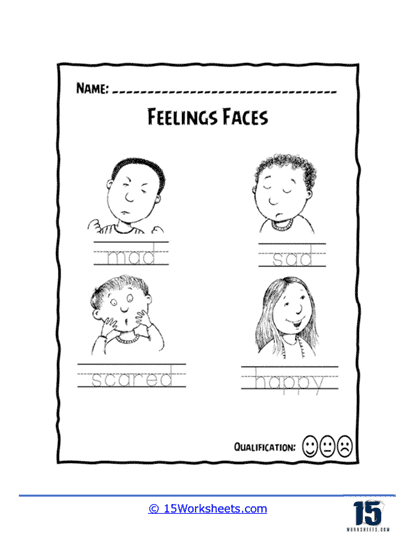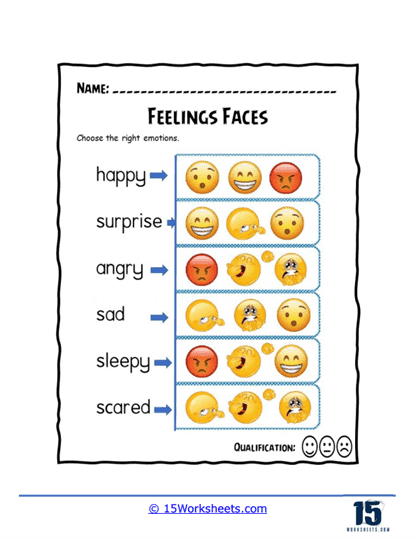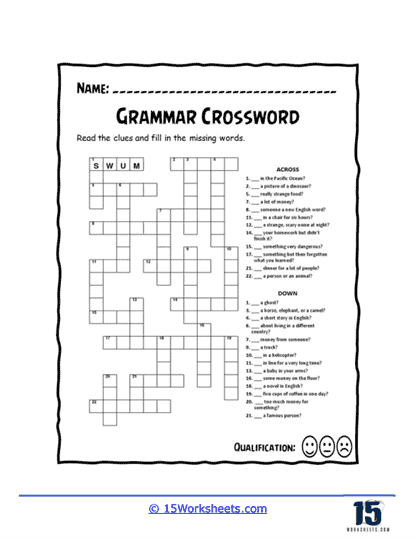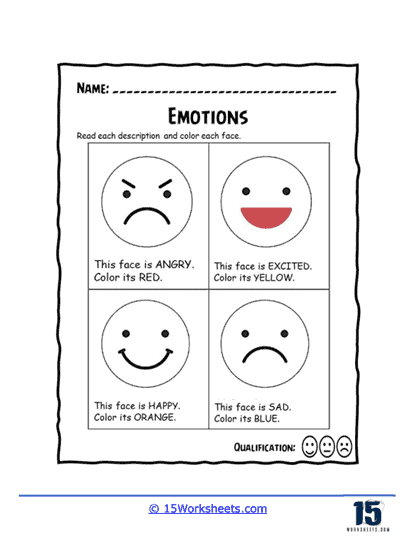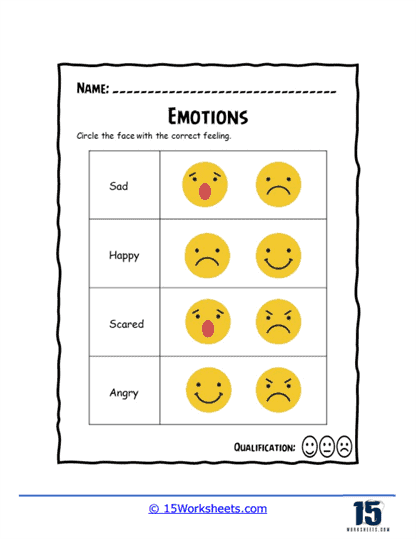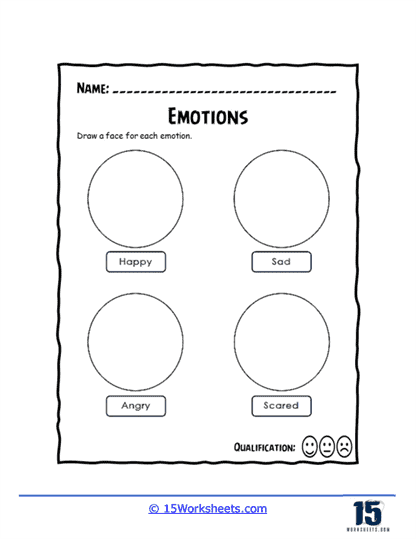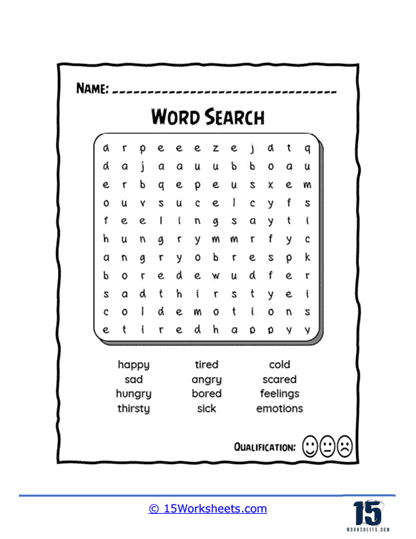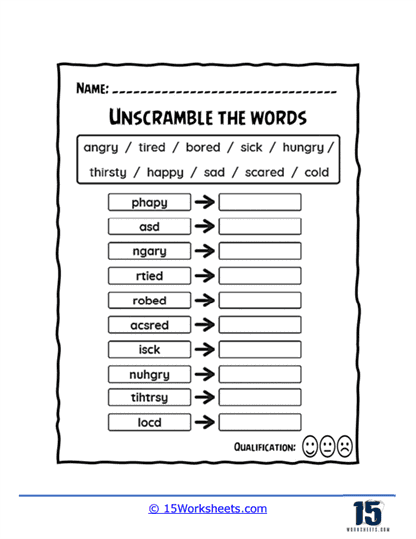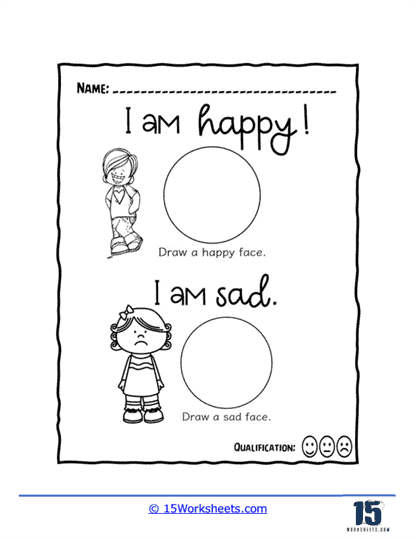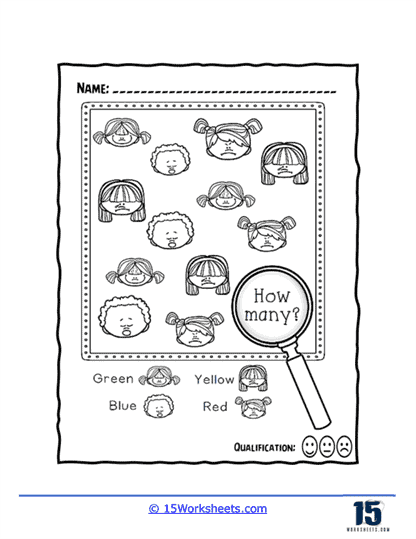Feelings Worksheets
All About These 15 Worksheets
Understanding and expressing emotions is an important skill for young students as they navigate their social and emotional development. This series of 15 worksheets on Feelings is specifically designed for young learners, providing them with age-appropriate activities to explore and recognize their emotions. Each worksheet within this series focuses on different aspects of feelings, helping young students develop emotional awareness, empathy, and effective emotional expression.
Learning about feelings can be a rollercoaster-one minute you’re giggling at a smiley face, the next you’re reflecting deeply on why that cartoon lion looks so betrayed. The Feelings Worksheets collection is a wild yet meaningful ride through emotional literacy, suitable for students just starting to understand their own moods-or at least figure out what face goes with “grumpy but still wants snacks.” For the budding artist-therapist in every child, activities like Draw The Faces, Draw A Face, and This Is How I Look put pencil to paper and invite students to sketch their emotions or interpret what someone else might be feeling. Sure, some faces might end up looking more like confused potatoes, but the emotional journey is real.
For kids who see the world like a Pixar movie-vibrant and color-coded-there’s Color Moods, Colorful Emotions, and Circle Your Answer. These worksheets help students link colors with feelings (why is sadness always blue?) and practice identifying emotional states in various situations. One day you’re circling “happy” because the kid in the picture got a puppy, the next you’re pondering why another one is sad despite having a perfectly good balloon. These worksheets sneak in emotional nuance like a cartoon hiding philosophy-suddenly you’re five years old and wondering if balloons bring true happiness.
Next come the matching and sorting worksheets for the logic-inclined kid who believes emotions should come with clear-cut instructions. Lion King Matching and Trace And Match serve up scenarios where students pair facial expressions or iconic characters with their corresponding feelings. If you’ve never tried to guess Simba’s emotional state during his father’s untimely demise using emoji-style cues, you haven’t lived. Pick The Right Emoji continues the party by asking students to select the appropriate digital face for various situations. It’s emoji therapy, but without the passive-aggressive group chats.
Now, for the linguistic virtuosos among us-or the ones who just like solving puzzles-there’s a batch of worksheets where feelings get turned into word games. Grammar Crossword, Word Search, and Unscramble The Words make vocabulary practice feel like decoding the secret language of the heart. Sure, unscrambling “anxious” is hard when you’re feeling exactly that way about your snack time being delayed, but it’s a great way to boost both literacy and self-awareness in the process.
Finally, the collection brings in the introspective counters and deep thinkers. Happy And Sad helps kids categorize emotional opposites-because life is a pendulum between those two states when you’re trying to share crayons. Feelings, Faces takes things further by offering nuanced facial cues for students to interpret, while How Many? provides a sneaky math-emotion crossover that asks students to count emotional faces like a feelings-themed “Where’s Waldo.” In the end, these worksheets are more than just activities-they’re a funny, touching, slightly chaotic exploration of the wild inner lives of kids, one smiley face at a time.
How to Teach Students About Feelings
Teaching young people about feelings is less a lesson than a gradual conversation-a kind you return to every day until the language of emotion feels as natural as the air in the room. Below is one way to weave that conversation into classroom life so students can recognize, name, and navigate their inner worlds.
1. Start by giving feelings names
Imagine beginning the week with a blank “word wall” and inviting students to help you populate it. They might begin with familiar staples-happy, sad, mad-but soon discover richer shades: serene, impatient, elated, uneasy. Group the words by intensity so learners see the subtle climb from calm all the way to exhilarated, or from irritated to furious. Whenever a new word surfaces in a read-aloud or social-studies debate, celebrate it by adding it to the wall. The simple act of naming an emotion often softens its grip; children quickly learn that words are tools for mastering confusion.
2. Connect the brain and the body
Once the vocabulary is in place, pull out a sketch of the “emotional brain”-the amygdala sounding its alarm, the prefrontal cortex deciding what to do with that alarm, the hippocampus filing the experience away. Ask students to note what anger or excitement feels like in their bodies: a pulse in the temples, a fluttering in the stomach, heat in the cheeks. When they can map an emotion to a sensation, they start noticing it earlier-right when a coping strategy can still change the outcome.
3. Model feelings out loud
Adult transparency is catalytic. When the projector malfunctions and you find frustration rising, say so: “I’m feeling tense because our slideshow won’t load. I’m going to take two deep breaths before we continue.” Your calm self-talk turns a tech glitch into a mini-demonstration of regulation. With time, students will echo your language: “I’m a bit nervous about this presentation, so I’m grounding my feet.” The classroom culture shifts from hiding feelings to handling them in the open.
4. Make practice part of routine
Tiny rituals keep the skill alive:
- Morning feelings jar – A student draws a word and recalls a time they felt it; classmates respond with supportive comments.
- Two-word check-ins – Partners exchange two words that capture their current mood, then paraphrase each other before swapping roles.
- Exit tickets – At day’s end, everyone writes one feeling they managed well and how they did it.
Each routine lasts barely five minutes, yet together they create dozens of low-stakes rehearsals where emotion vocabulary meets real life.
5. Fold feelings into academics
Emotions are not an “extra”; they animate every subject. In English class, students might rewrite a pivotal scene from the antagonist’s point of view, highlighting textual evidence for each feeling. In science, they could monitor heart-rate data before and after square-breathing to graph how physiology responds to calm. Art becomes an exploration of line, color, and form that communicates joy or grief without a single facial feature. When feelings permeate content, students learn that emotional insight powers rigorous thinking.

